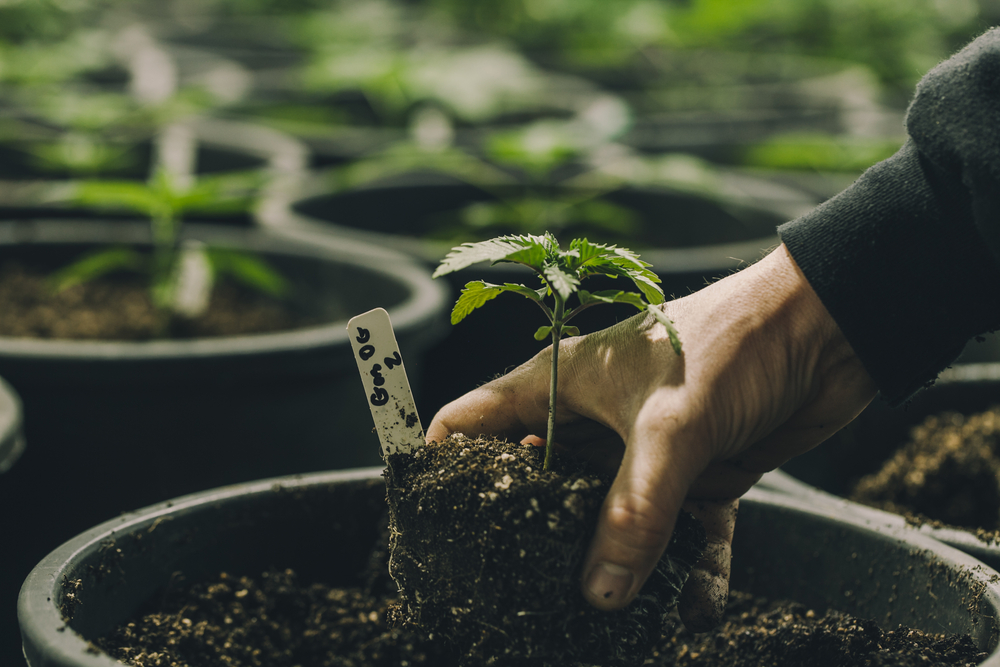By Jonathan Tsai, Duramax Building Products
When building a cultivation facility, different building material has its own benefits in regards to installation, maintenance, and physical attributes. Cultivators have routine operating procedures and need to minimize as many variables as possible. Using a building material that is low maintenance and long-lasting is a priority. Light consistency is another big role. Walling material should be light reflective so the lighting system is as efficient as possible thus producing less heat discrepancies. And lastly, due to water use, humidity can play an important part of cultivation; water resistant walls can attribute to a well-controlled environment.
Here we will look at three popular materials for commercial cannabis warehouses: Mylar sheeting, FRP, and PVC.
Maintenance and Hygiene
From the daily cleaning operations to the cycle of harvesting, building material can be the difference between easy and difficult. Smooth surfaces are favored over rough or textured due to an easier cleaning process and less opportunity for bacteria and dirt to hide in crevices.
-Mylar Sheeting is commonly used as a greenhouse tarp, it is reflective sheeting that is propped on an existing wall. It must be kept wrinkle-free or light reflective hotspots may disrupt plants. One of the best options for custom indoor grow houses.
-FRP (Fiber Reinforced Plastic) sheets are commonly used as an inexpensive option that is applied to walls with adhesive. It usually has textured surfaces and rivets which may be troublesome to clean. Sheets may also peel off walls after time.
-Duramax PVC (Polyvinyl Chloride) are vinyl panels that interlock with each other to become the wall itself. They are bright white and light reflective. They also have a smooth flush surface.
Installation
Installation and labor time can make a huge difference in overhead cost. The amount of work required depends on what material is used and if any time is needed for drying/layering. Each material has a different process that may require additional time or material.
-Mylar Sheeting is the easiest to install. The reflective sheets can be easily propped to any type surface by one laborer. (Keep in mind that sheets are not allowed to be dividing walls).
-FRP (Fiber Reinforced Plastic) sheets require the most time and skill. Due to requiring adhesive, rivets, and trim between each panel, FRP needs two laborers to install.
-Duramax PVC (Polyvinyl Chloride) panels can be placed on a wall or directly onto the studs before being screwed in. Each panel interlocks with another and may require silicone to be airtight. Duramax PVC requires one laborer to install.
Water Resistance
Since maximizing plant growth is the goal, warm and humid environments are optimal. Walls that are not water resistant have the risk of creating pathogens that can spread into the room and on the plants.
-Mylar Sheeting is waterproof, and as long as the wall that the sheet is covering isn’t wood, there is no risk of mold.
-FRP (Fiber Reinforced Plastic) sheets themselves are waterproof, but usually the backer that it is glued on is wood and is susceptible to mold.
-Duramax PVC (Polyvinyl Chloride) panels are waterproof, but they may need a silicone sealant between each panel to prevent vapor from entering.
Overall, there are many options for building materials used in a commercial cannabis warehouse. Depending on the building size, shape, and environment each material can be the right or wrong choice. For start-ups, pricing may be a big factor, but don’t forget about practicality and maintenance in the long-term. Daily cleaning, harvesting, replacements, fire codes, safety codes, and hygiene codes govern the future of cannabis facilities.
 Jonathan Tsai is the head of Duramax Building Products Online Marketing division. He has been a lead proponent in educating the market about the latest technology in building materials.
Jonathan Tsai is the head of Duramax Building Products Online Marketing division. He has been a lead proponent in educating the market about the latest technology in building materials.
Through his time with Duramax Building Products, he has gained extensive knowledge on the extrusion of aluminum, plastic, vinyls, and other building materials. His mission is to provide value to readers through educational content and media.


Follow NCIA
Newsletter
Facebook
Twitter
LinkedIn
Instagram
–